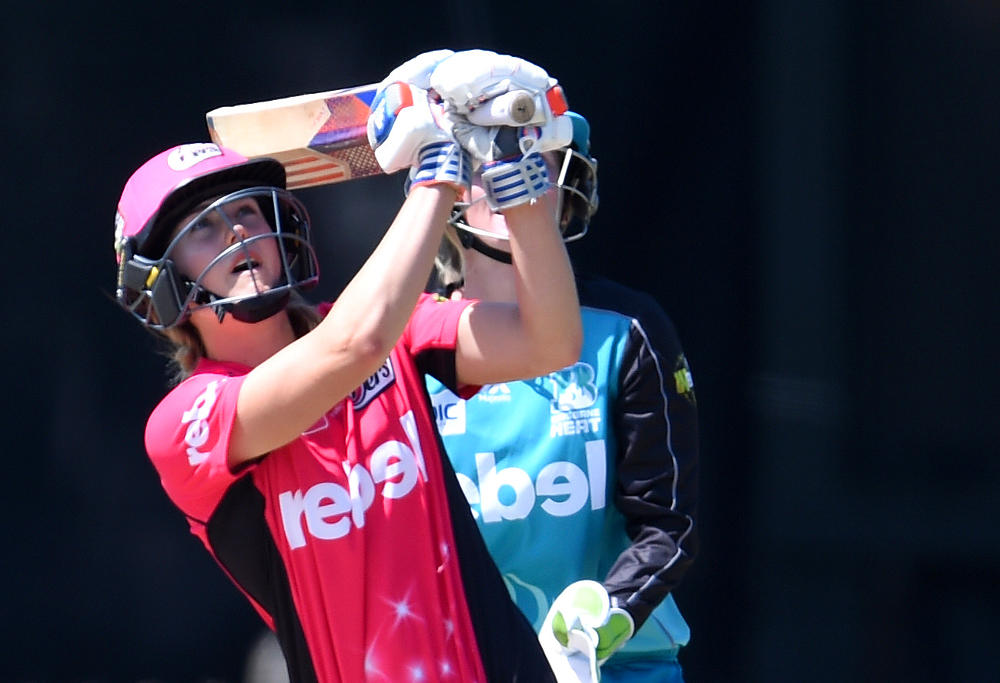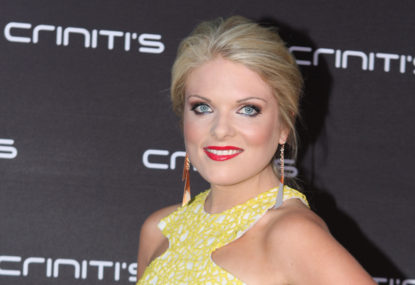A new wave of female journalists and sports presenters has arrived and our screens and columns are littered with their offerings.
With a women’s BBL, W-League and the eagerly anticipated AFL competition already launched, it is high time that the level of female commentary about the sports which they themselves now play at a national and televised level, be a true reflection of the broader community.
The Roar’s own Mary Konstantopolous provides an excellent weekly snapshot of the key events unfolding in women’s sport around the world.
While I have had some negative comments made to me about the legitimacy of women’s sport over the years, watching my own daughters’ engaging in once male-only pastimes, clarifies a central point in my mind.
Yes, the crowds are somewhat disappointing at times, perhaps the depth in some sports is not that of the male equivalent and sure, the corporate dollar interest and financial rewards may take some time to grow to levels of respectability. However, none of this is anywhere even near the point.
Blokes might laugh at the boundary rope placements for the women’s BBL or suggest that the W-League might struggle to exist without the A-League’s influence. These attitudes are merely narrow minded, misogynistic and Neanderthal.
The reality is, things take time and it might be best for everyone to closely watch the competitions on which they choose to comment.

Understanding the power differences as athletes, adjustments made in playing field design, speed gun readings and different styles and approaches due to the physical differences is vital in appreciating the women’s versions of many sports.
It is the role of the increased female voice present in our media, to ensure that these points are clear. With informed male commentators, open minded enough to study the women’s game, the growth in women’s sport can continue and potentially be accelerated.
Furthermore, continued quality analysis of the male game by astute and qualified female journalists, commentators and presenters, also adds credibility to the women’s version.
The dream scenario would be one where the gender of the voice commentating on an event, issue or contest itself, should be less important than the words and analysis emanating from their mouths.
The new breed have some wonderful pioneers to thank for the opportunities that are currently being presented for females in the media.
Love her or hate her, Caroline Wilson has been a lightning rod for change. Her fearless work at The Age, while not everyone’s cup of tea, saw her become the first woman to cover football full-time. Her ascension to the position of chief football writer in 1999 had been previously unthinkable.
Karen Tighe has had a long and distinguished career with the ABC, where she has covered just about every sport known to women, thanks to her role on ABC Grandstand.
I can still remember watching her keep a stiff upper lip in the face of sexist and suggestive comments made by Don Lane in one of his lame presentations of the Superbowl, aired on the ABC in the early nineties. By today’s standards he would have been crucified.
Debbie Spillane also honed her craft at the ABC, as well as through numerous radio gigs and newspaper columns.
She eventually climbed to the position of media manager for the Bulldogs in the 1995 NRL season, a tough gig at that time, and wrote, spoke and passed judgement on sport from a female perspective for many years.
The late Rebecca Wilson left us earlier this year with much controversy surrounding her opinions on football. Wherever people stand on the issue, she spoke and wrote from the heart with passion and conviction.
The admiration expressed in words by fellow journalists from all sources was testament to her legacy.
Less notable, Sandra Mackenzie-Wood and Jane Crafter brought insight and intelligence to the broadcasting of women’s golf in Australia. Knowledgeable, clever and respected by all, Crafter brought golf alive in Karrie Webb’s period of dominance, as the Queenslander took on the world.
The current crop owe these women a great deal considering the opportunities they forged for those behind them. Thankfully there is a substantial amount of women doing their legacy proud as we speak.
Erin Molan’s star continues to rise. Television, radio and some serious social commentary have all combined to forge a persona reflecting an educated, serious and sharp woman who will speak her mind come hell or high water.

New Foxtel appointee Yvonne Sampson is in the same vein, without perhaps the same sense of vigour when it comes to social commentary, yet rugby league is better off with these two women in the game.
Lara Pitt continues to impress despite having to grin and bear some of the silly antics that occur on Monday Night with Matty Johns. Sometimes I think she just wants to get up and leave and discuss rugby league with someone who really cares.
It was also great to see Pitt, while pregnant, permitted to continue her employment, without being hidden and shamed, as was the norm last century. Key words, last century.
Neroli Meadows is outstanding, managing to interview players without inundating them with cliché’s and vacuous phrases that allow for answers of the same nature.
Jessica Yates is as slick as they come in terms of anchoring a network television broadcast. I cannot recall her ever making a mistake (I’m sure she has) in her work for the channel 10, V8 Supercars coverage. She is professionalism personified.
Kelli Underwood has made great strides for women in the AFL, debuting as a commentator for the male game in 2009. While not a continued arrangement, the symbolism of the moment was significant. She has a considerable task ahead in her role as chief commentator in the new women’s competition.
Lastly, what would A-League coverage be without Tara Rushton. She constantly reminds me that sport is actually supposed to be fun.
Slick, organised and able to control a few ex-Socceroos who can be a little ‘loose’ at times, she conveys a passion and positivity that, in the face of constant criticism from some quarters, the A-League desperately needs.
While these women are excelling and taking great strides, there are also those who frequently let themselves down.
Rennae Stubbs’ inane drivel and patriotic blinkers do little for the ‘summer of tennis’. Her colleague Sam Smith is a needless British accent that Channel Seven feels adds some sort of prestige to the coverage. John Barrett had been used for years for the exact same reason.
Much like a discount store where everything cost a couple of bucks, the powers at be feel the aristocratic sound of a pompous pom adds weight. I’d much rather have a lunatic Frenchman like Henri Leconte any day.
Stephanie Brantz is struggling to identify players accurately in the W-League and often overstates the action, seemingly in an attempt to create interest. Having a co-commentator with football credibility alongside her has been a wise move and there are signs that there has been some improvement in the coverage through the course of the year.
Lisa Sthalekar was incredibly awkward in her role on the BBL when I saw her last week. Yet, there might be hope for both Brantz and Sthalekar, as they appear sharp and knowledgeable, and are grappling with something quite new.
Just like their male counterparts, there will always be the good and the bad. As much as Bruce McAvaney and Eddie McGuire rub people the wrong way, as indecisive as Todd Woodbridge can appear and as weird as the expression of Daniel Garb can sound, there will always be criticism ready to be launched.
What is now comforting, is that the vast array of women in the media should now see that criticism based on words, opinion and professionalism and not skirt length, hair, appearance or sexuality, as has so often been the case in the past.































































































